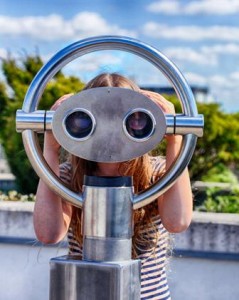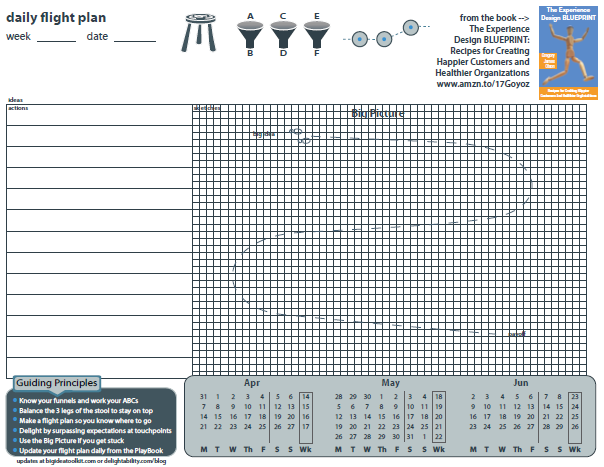3 Modes of Failure and 10 Reasons You Don’t Get Help
Modes of Failure
Failed, failing, and will fail. If you haven’t failed or are in the process right now, your time will come. It’s guaranteed. Here is why…
Failure happens to all of us. We all fail at some point. It is a fact. The frail human body demands it. We are not giant sequoia, the only natural living organism that doesn’t have a natural terminus to its life. Unlike humans, old age just keeps getting older for the giant sequoia. All other plants and animals undergo changes at the cellular level, as they mature and eventually die. A giant sequoia properly supported and shielded from insects, fires, and other damage will literally live forever. Key to their long life is a supportive ecosystem.

A Better Ecosystem
The giant sequoia is at peace within the forest ecosystem and within itself. Every tiny cone, winged needle, water carrying capillary, section of thick spongy bark, all work together toward making the giant healthier. This is true until the day the giant falls. The sequoia does eventually lose its ability to support and sustain itself. If it could reach just the right size or expand its support system as it grew, old age would keep on going. But it does usually fall under its own weight. In life and in business our ecosystems are inferior to that of the giant sequoia; we have much to strive for.
What to Learn From an Old Giant
Building your support structure should be like the ecosystem of the sequoia. A strong base of support can keep the organization healthy as it ages. Relationships should be symbiotic where both parties benefit. Avoid parasitic relationships that can weaken you. At the extreme, a parasite can unwisely kill its host. Healthy forests are comprised of diverse trees at different stages of maturity. Each offers something unique to a healthy environment.
 Isolation Limits Perspective. Each of us can get into the heads-down mode, intently focused on our task at hand. But, focus too long in the same direction and you can lose perspective. It is easy to lose touch with the world that changes around you. Colleagues that share an office or a water cooler often share similar perspectives. As in nature, mono-culture can lead to a lack of diversity and unhealthy cycles where what nature provides to plants and the soil are eliminated. A less time-lapsed version of this limited perspective is the circular death mill, where army ants dutifully follow the scent of the soldier in front of them. Marching forward in a circular pattern together, they slowly grow weary and each of them dies. Their limited perspective never did reveal a clear path forward.
Isolation Limits Perspective. Each of us can get into the heads-down mode, intently focused on our task at hand. But, focus too long in the same direction and you can lose perspective. It is easy to lose touch with the world that changes around you. Colleagues that share an office or a water cooler often share similar perspectives. As in nature, mono-culture can lead to a lack of diversity and unhealthy cycles where what nature provides to plants and the soil are eliminated. A less time-lapsed version of this limited perspective is the circular death mill, where army ants dutifully follow the scent of the soldier in front of them. Marching forward in a circular pattern together, they slowly grow weary and each of them dies. Their limited perspective never did reveal a clear path forward.
It’s lonely at the top, whether you are the Chief or the Chair or the master of your freelance domain.
Talk of Death is Easier than Failure
Conversations about failing are difficult to have within an organization. You might be searching for solutions, but somebody else might interpret your actions as you giving up. So, many play it safe instead; they don’t speak of failure, failed, or failing. This can lead to feelings of isolation. If you work alone as a freelancer, you already have this isolation built into your business.
If you’ve ever held the hand of a dying person, then you realize that even though you are in the same space with objects common to both of you, your experiences are very different. Of course they are, because your context is different. They are dying and you’ll go on to live another day, R.I.P. Karen and Lavera. It is much the same within and between organizations that work together. People are at all different stages of awareness, acceptance, solution finding, denial, anger, etc. In some ways, it is easier for people to talk with a person physically dying than it is for them to talk to another about their own organization that may be nearing the end. They often put on the “happy face” and pretend.
 Positive Thinking May in Fact be Negative
Positive Thinking May in Fact be Negative
People fixated purely on positive psychology can mistake a situation problem with a people problem. This can exacerbate the feeling of isolation and prevent people from getting the help they and their organization need. My friend, whose business DID recently fail, did all things right, and still failed. She didn’t attract it. There was no people problem. There was no energy she was exuding other than positive, wonderful, game changing, future making energy with jobs created, services provided and taxes flowing into the community. But, the situation morphed. The external environment changed and made her business illegal, by the stroke of a governor’s pen, backed by a state legislature. It was completely outside of her control. She didn’t even know it was happening, that is until it did. Like a sick patient, a business also needs to confront its reality. She did. Others, do not. See related post: Why Think Positive is So Last Year.
The Timing Goddess
Equally perilous, the timing goddess can be merciless. I saw many would-be good companies disappear during the dot-com bubble because funds available for investment dried up as investors recoiled to inspect their damaged portfolios. Guided by fear and greed, many investors were not good at separating the wheat from the chaff prior to, or following the bust. In fairness, the timing goddess can also bless a company, even one which at a different time would not pass scrutiny. Whether it is physical death or business failure people need comfort, assurance, and when appropriate interventions and remedies that can prevent premature or painful death.
Learning from Success AND Failure
We all love a great success story. There are no shortage of people who wish their brand could be “just a little more like Apple”, etc. But, success rarely follows a straight up-and-to the-right trajectory and it’s definitely hard to replicate, though many have tried. Most successes, like progress itself, are built on the backs of failed experiments, trial and error, early initiatives, course corrections, and false starts, etc.
I’ve had my own businesses fail. I’ve worked with others who business has failed, too. Some of my failures include ideas that couldn’t get going or those that got going and then fizzled later. I’ve also had projects that failed, campaigns, design approaches, even routes. The route failure was particularly painful because in the end our party hiked 3 times farther than originally planned. We arrived at our vehicle, hungry, cold, blistered, sore, and exhausted at 10:40 pm one dark and dreary fall evening – sorry Shannon and Lisa. All of my failures AND successes have helped to sharpen my approach when reaching for new destinations, whether in the natural or business landscape. But, I also learn from the successes and failure of others.
Expanding Your Village
In a software company that I started I created three levels of advisors. I had my official board of directors, comprised of one outside board member (a VC that extended a loan) and two insiders, one of which was me. This board provided little value to me, or the operation and was even detrimental at times. I also established a formal advisory board and what I referred to as my coffee-table advisors. Upon reflection, I view the latter group as the most beneficial. We’d meet for coffee occasionally to chew through an issue or to catch up and review. Meetings were usually one-to-one or one-to-few. Each of these advisors was experienced, retired, interested in my success, and didn’t need my startup’s stock options, a stipend or even an honorable mention. There was no formal written agreement. Each of them simply wanted to help.
By contrast, each of my formal advisory board members did have a written agreement that spelled out the number of stock options (warrants actually) they were to receive; there was no cash compensation or stipend. Each adviser provided something valuable and tangible to the business. In one case that was “starter” code that helped showcase our first prototype, the predecessor to our minimally viable product. Advisors also provided perspective, guidance, and feedback to less experienced personnel. In one case, an advisor provided access to their personnel and even some office space within their business. The strategic, technical, and financial advice we received was beneficial to me personally, as well as the business. All of my advisors provided access to their network, which was valuable and appreciated. None of what I’m sharing ever appeared on an organization chart and much of it remains unknown today, to the people involved in the company. In life and in business, it really does take a village. And that village isn’t always visible.
Failure, While Certain for Humans is Not for Business
While our own body’s ecosystem is prone to failure, our businesses don’t have to be. Like the giant sequoia, with proper care businesses can outlive their earlier human contributors. There is no natural death cycle for a business, even though some refer to the life cycle of a business. Tell that to Zildjian, a company that continues to reinvent itself. It’s leadership has persisted through revolution, changes in technology, movement across counties and continents, and even fire that gutted the factory. The company has persisted since 1623. You can be sure the company leadership from its inception to today, received much help from a broad village of support.
 10 Reasons We Don’t Ask for Help
10 Reasons We Don’t Ask for Help
In some cases, the barrier that prevents us from getting help is the monoculture already mentioned. It has us seeking counsel inside the organization, reflecting what we want to hear. After all, outsiders might tell us something uncomfortable. Other reasons we don’t ask for help include:
- We wait too long and convince ourselves that it’s too late to effect change. Feelings of hopelessness and even depression can accompany this.
- We are too proud to ask for help. Leaders are accustomed to leading and not the best people to ask others to help them.
- We don’t know where to begin. Things are not well, but we don’t have a question to ask or project to pursue. There is no clear path forward.
- We are distrustful of strangers especially outsiders to our business. We may lose control.
- We have a blind spot that we are failing and that others could possibly see more potential for our business.
- We lack the knowledge of the type of help we need; there doesn’t appear to be a company doctor to ease or prevent our type of pain.
- We believe our situation so unique that nobody could possibly understand or help.
- We believe our business and current situation are too complex or dynamic. They are not stable enough; they change too quickly to immerse anybody. FYI – this can also prevent people from hiring new employees.
- It is expected that I seek a self-help solution. The cultural drive for self-help can be strong and there could be stigma associated with getting help.
- We have no budget for this type of this. Getting help outside of established patterns is rarely a budgeted expense anymore than one budgets for a healthcare emergency. Nobody plans for a chipped tooth (that happened to me in the recent past). But, sometimes an investment in your health or professional development is warranted (I feel much better with my restored tooth).
You can’t avoid death in life, but you can in business.
Summary
You can’t avoid death in life but you can in business. Notice that none of the ten answers was “because help was not available.” Like a patient that seeks medical care there is plenty of help available. There are general and specialized consultants to address challenges and opportunities for all sizes and types of organizations. But, you have to seek it out. Just like you establish care with a medical practitioner ahead of when you need it, it is a good idea to have some “go-to” people for your business health, too. If you do, perhaps you should let them know how you are feeling. They might have just the medicine you need. And, like a good doctor, each has a network of other resources standing by for referral. Cheers to your continued health and kudos to you for overcoming these 10 barriers when the time comes that you too, need some help.
about the author
Gregory Olson’s latest book is L’ impossi preneurs: A Hopeful Journey Through Tomorrow, a light-hearted and deadly serious book about a brighter future where we live more meaningful lives, governments invest in people and sustainable progress, and technology serves humans. Greg also authored The Experience Design Blueprint, a book about designing better experiences and then making them come true. The models in the Experience Design BLUEPRINT are equally relevant to organizations of all types and sizes including start-up entrepreneurs, nonprofi ts, for-profi ts, and government.
 Gregory Olson founded strategy and design firm Delightability, LLC. with the belief that if you delight customers then success will follow. He believes that we all have the potential to do better, as individuals, organizations, and communities, but sometimes we need a little help. Gregory also serves as a volunteer board member for Oikocredit Northwest, a support association for social and impact investor, Oikocredit International.
Gregory Olson founded strategy and design firm Delightability, LLC. with the belief that if you delight customers then success will follow. He believes that we all have the potential to do better, as individuals, organizations, and communities, but sometimes we need a little help. Gregory also serves as a volunteer board member for Oikocredit Northwest, a support association for social and impact investor, Oikocredit International.





 Freed from the shackles of inaction
Freed from the shackles of inaction But, even if they don’t, a culture of care can begin with each of us. At home, in school, in our communities, at work, even in the online community. So what about you? How will you create a culture of care, in your home, in your work, in your community? You’ll likely need a test to go with it. What will be your equivalent Reasonable Investor Test? We really can all do better as individuals, organizations, and the world community. I hope you’ll do your part. Onward.
But, even if they don’t, a culture of care can begin with each of us. At home, in school, in our communities, at work, even in the online community. So what about you? How will you create a culture of care, in your home, in your work, in your community? You’ll likely need a test to go with it. What will be your equivalent Reasonable Investor Test? We really can all do better as individuals, organizations, and the world community. I hope you’ll do your part. Onward.











 Gregory Olson founded strategy and design firm Delightability, LLC. with the belief that if you delight customers then success will follow. He believes that we all have the potential to do better, as individuals, organizations, and communities, but sometimes we need a little help. Gregory also serves as a volunteer board member for
Gregory Olson founded strategy and design firm Delightability, LLC. with the belief that if you delight customers then success will follow. He believes that we all have the potential to do better, as individuals, organizations, and communities, but sometimes we need a little help. Gregory also serves as a volunteer board member for